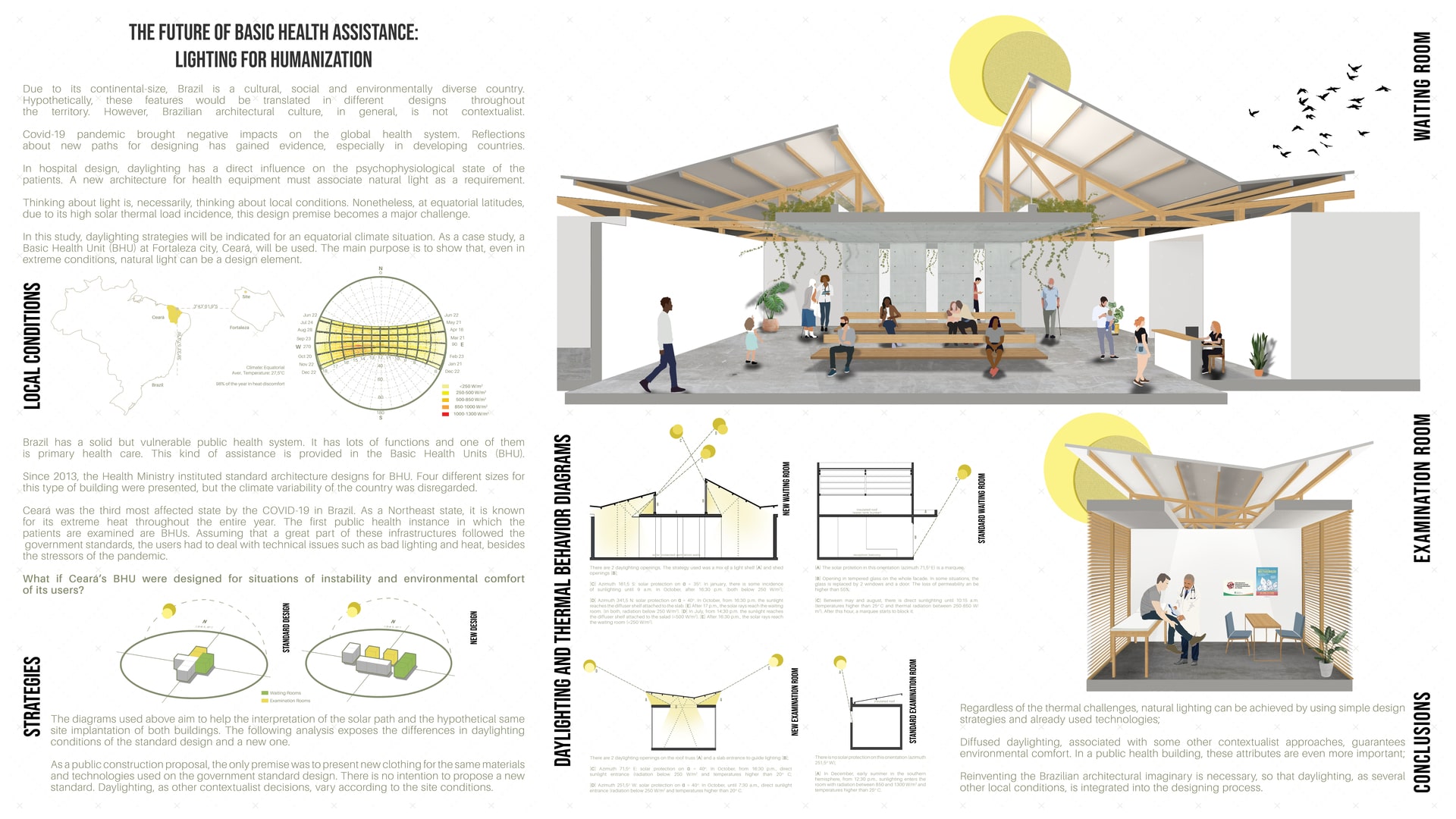Project Description
Due to its continental-size, Brazil is a cultural, social, and environmentally diverse country. Hypothetically, these features would be translated in different designs throughout the territory. However, Brazilian architectural culture, in general, is not contextualist. In hospital design, daylighting has a direct influence on the psychophysiological state of the patients. A new architecture for health equipment must associate natural light as a requirement. However, thinking about light is, necessarily, thinking about local conditions. If a building is designed to reach daylighting, it must consider climate profiles. At equatorial latitudes, for example, due to its high solar thermal load incidence, this design premise becomes a major challenge. Since 2013, the Brazilian Health Ministry instituted standard designs for Basic Health Units (primary care assistance equipment). Four different sizes of this program were presented, but the climate variability of the country was disregarded. In practice, it means that the same buildings can be constructed in any of the 26 states. Ceará was the third most affected state by the COVID-19 in Brazil. As a Northeast state, it is known for its extreme heat throughout the entire year. Assuming that a great part of the healthcare infrastructure followed the government standards, the users had to deal with technical issues such as bad lighting and heat, besides the stressors of the pandemic. This proposal aims to present natural lighting strategies for Equator near sites by using a Basic Health Unit at the capital of Ceará state (Fortaleza city) as a case study. The idea is to ensure lighting comfort as well as other design aspects that cannot be neglected in a complex public program, such as cost and constructive feasibility.
